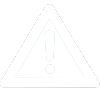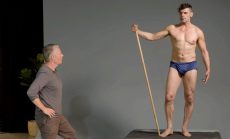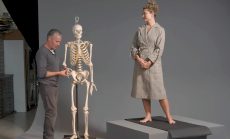In week one, Patrick introduces you to the fundamentals of anatomy and gesture using the model Rajiv. You’ll explore techniques for capturing rhythm and contour, employing methods like the “Mermaid’s Net” and “Pentimento” to simplify complex forms. Patrick also analyzes works by iconic artists such as Norman Lindsay, Frank Frazetta, and Boris Vallejo, demonstrating how their influence shaped his own artistic journey.
In week two, you will delve into the essential materials for figure drawing, focusing on the use of charcoal and pencils to capture gesture and structure. Patrick teaches you how to warm up with rhythmic exercises, simplifying complex forms with concepts like the “Mr. T” for the torso and “The Bean” to depict movement.
In week three, Patrick introduces the “A.U.D.” method—Analyze, Understand, and Draw—as a structured approach to simplifying complex anatomical forms. You’ll learn to break down the figure into manageable shapes, using tools like mnemonics and key landmarks. Patrick also demonstrates the balance of gesture and structure while guiding you through the challenges of “Render Hell,” ensuring you don’t lose the dynamism of your drawing in the process.
In week four, Patrick focuses on the importance of stepping away from your drawings to return with fresh eyes, refining your work while maintaining a balance between gesture and structure. You’ll explore how to combine the life and energy of gesture with the solidity of structure, ensuring that your figures are both dynamic and anatomically sound.
In week five, you explore the concept of allegory through the “Seduction of Perseus” pose, with Patrick demonstrating the technical nuances of sharpening charcoal pencils. He introduces the “internal art engine,” focusing on the mileage and fundamentals of drawing, and the “external art engine” to evaluate and refine your work.
In week six, Patrick tackles the concept of “Drawing the Impossible,” using the Amanda pose to explore complex anatomy and rhythm. He delves into the realities of being a working artist, offering advice on staying motivated through small wins in freelance work. You’ll learn about navigating the “plateau” in your artistic growth, the power of visual tricks, and the importance of flexibility—both in gesture and career.
In week seven, Patrick shifts focus to the male figure, discussing the differences in gesture and anatomy compared to the female form. You will explore the “Switcheroo” technique, moving from female to male anatomy, with a demonstration focused on the Rajiv pose. You’ll learn to capture male gestures, structure, and anatomy, starting with a close-up of the head and chest and expanding to the full figure.
In week eight, Patrick emphasizes the importance of storytelling in figure drawing, encouraging you to focus on narrative before style and technique. Using Rajiv’s “Perseus Betrayed” pose, he demonstrates how to lay in and build rhythm in your work while balancing contrast and highlights.
In week nine, you delve into a series of Gorgon-inspired drawings, focusing on anatomy, gesture, and storytelling. You’ll explore how to simplify complex forms while developing characters through expressive poses and dynamic gestures. Patrick emphasizes the power of anticipation in your drawings—capturing the moment before action to create tension and intrigue.
In week ten, Patrick deepens your understanding of figure drawing through a series of studies focusing on heroic anatomy and dynamic poses. Using the “Perseus” and “The Gorgon’s Dance” studies, he demonstrates techniques for foreshortening and rhythm, emphasizing the importance of emotional engagement with your subject.
In week eleven, Patrick takes on the complex “Gorgon Betrayed” pose, focusing on foreshortening and the anatomical challenges of the figure. Through detailed analysis of the model’s pose, he discusses how agony and revenge can shape the narrative and emotion of a drawing. You’ll explore advanced techniques such as pronation of the hand, rendering, and molding light and shadow to create depth.
In week twelve, Patrick explores how drawing serves as the foundation for his painting process. Focusing on his piece Valley of the Harpies, he demonstrates how structure, rhythm, and composition established in the drawing shape his choices in color, lighting, and narrative. You’ll learn how elements like chiaroscuro, texture, and edges are built upon initial gestures, with drawing guiding every brushstroke.
Bonus: Collaborating with Rajiv – Directing Dynamic Poses and Artistic Motivation WithPatrick J Jones
In this bonus session, Patrick guides you through the collaborative process of working with Rajiv as a model, emphasizing the importance of storytelling, motivation, and emotion to create dynamic and engaging poses. You’ll explore key concepts such as contrapposto, light sources, and anatomy while learning how to direct models to effectively capture powerful, narrative-driven scenes.
In this additional bonus session, you collaborate with Amanda, a model and soprano singer, to explore emotional prompts, anatomy, and dynamic posing. The session highlights the differences between male and female gesture, with Amanda embodying the character of a Gorgon through narrative-driven poses.
Common Questions
This course is recommended for the intermediate level. Instructor Karl Gnass presents an in-depth examination of concepts and techniques that are best understood with a prior background in figurative art.
This course includes 12 downloadable assignment PDFs, that help you practice the materials taught by instructor Partick J. Jones. Keeping up with these assignments will maximize your learning outcome.
A material PDF list is linked in each lesson under the description. Please check the file to see what you need to prepare.
Most New Masters Academy courses are designed to be done traditionally or digitally. Software changes constantly, but the fundamentals stay the same. It will be up to you to translate the information that you are learning to your software of choice.

 UPDATE! October 1st, 2023: This version of the website will no longer receive updates. Please transition to the new website for the best experience.
UPDATE! October 1st, 2023: This version of the website will no longer receive updates. Please transition to the new website for the best experience. 













CONNECT
New Masters Academy
16182 Gothard St
Huntington Beach, CA 92647
Contact US